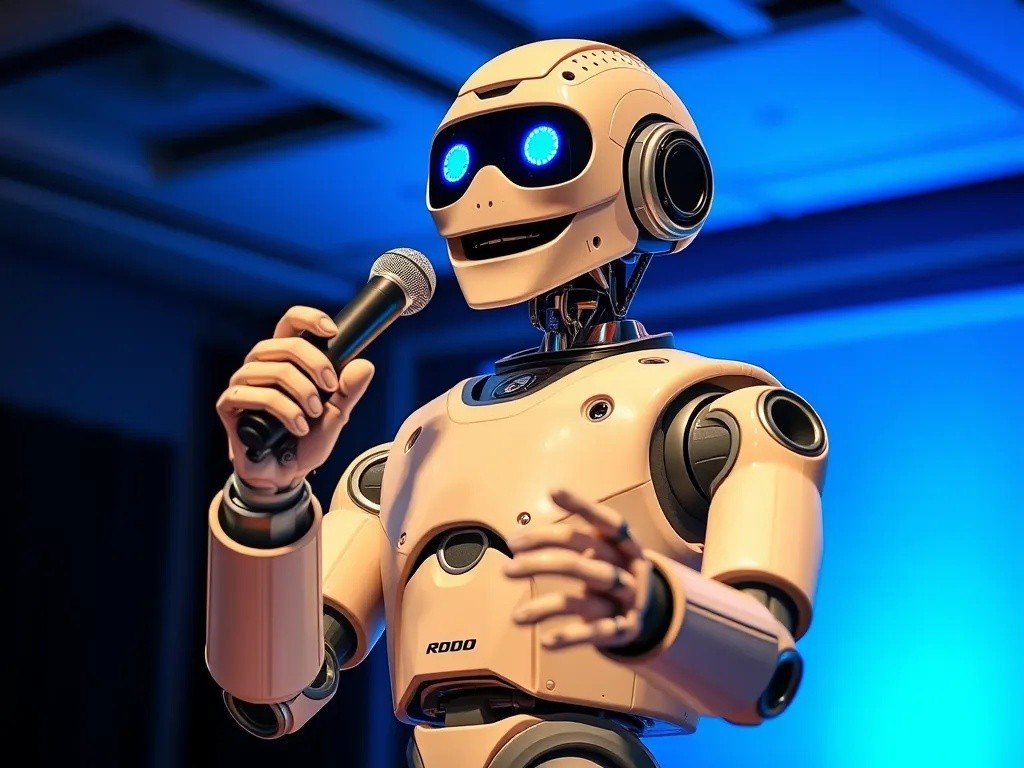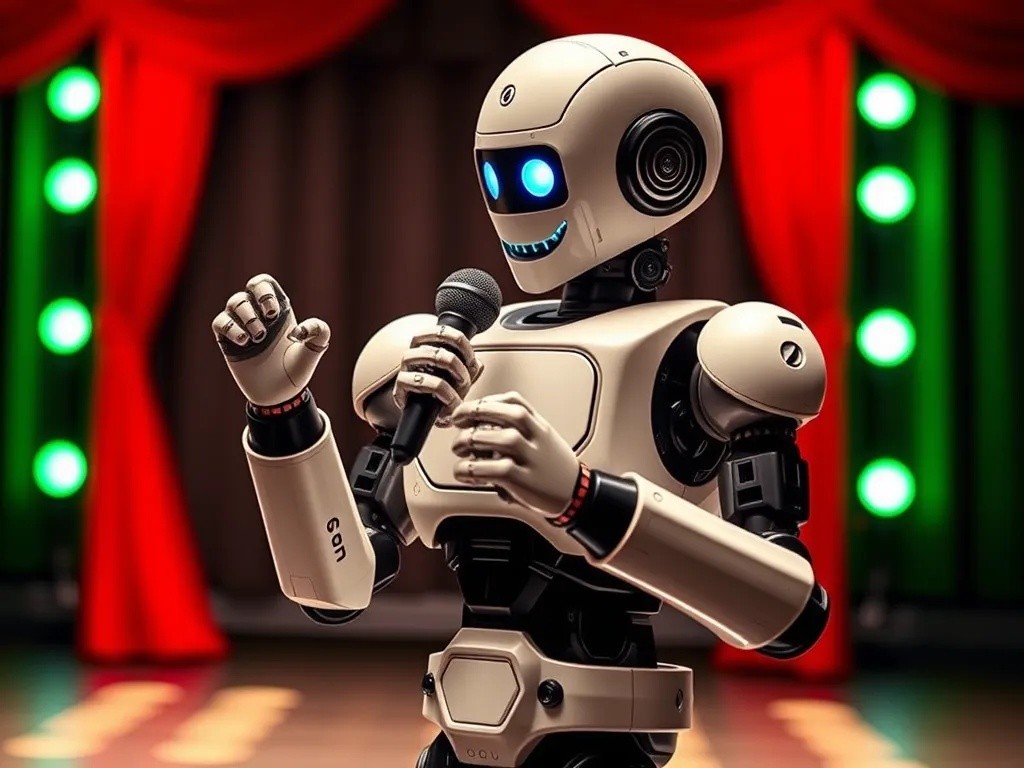In recent years, there has been a significant advancement in the field of Artificial Intelligence (AI) and Augmented Reality (AR). These technologies have become increasingly popular and have the potential to enhance virtual experiences in various fields such as gaming, education, healthcare, and...
Robot Comedian Performs Stand-Up Shows and Makes Audiences Laugh

When Machines Meet Comedy
Stand-up comedy, one of humanity's most distinctly creative art forms, is experiencing an unexpected evolution with the arrival of robot comedians. These artificial intelligence-powered performers are taking the stage at comedy clubs worldwide, delivering original jokes, reading audience reactions, and generating genuine laughter. What once seemed impossible - teaching a machine to be funny - is now reality, raising fascinating questions about creativity, humor, and the nature of entertainment itself.
The Technology Behind Robot Comedy
Natural Language Processing and Joke Generation
Creating humor requires understanding language nuance, cultural context, timing, and human psychology. Robot comedians employ advanced natural language processing algorithms trained on thousands of hours of comedy performances. These systems analyze joke structures, identifying patterns in successful humor such as setup-punchline relationships, misdirection techniques, and callback references. The AI learns what makes jokes work by studying legendary comedians while developing its own unique voice and style.
Audience Analysis and Real-Time Adaptation
Perhaps the most impressive capability of robot comedians is their ability to read and respond to audiences in real-time. Using computer vision, audio processing, and sentiment analysis, these machines monitor audience reactions through facial expressions, laughter volume, body language, and engagement levels. When a joke lands well, the AI notes the successful elements and incorporates similar techniques into subsequent material. If audiences seem restless or unresponsive, the robot adjusts its approach, switching topics or comedy styles to regain attention.
How Robot Comedy Shows Work
Performance Capabilities
- Original joke writing based on current events and trending topics
- Improvisation responding to audience comments and hecklers
- Physical comedy through precisely programmed movements and gestures
- Voice modulation creating different characters and comedic effects
- Timing adjustment based on audience laughter patterns
- Crowd work engaging individual audience members in conversation
- Set list customization for different venues and demographics
The Unique Appeal of Robot Comedians
Self-Deprecating Robot Humor
Ironically, some of the most successful robot comedy material involves self-aware jokes about being a machine. These performers excel at finding humor in their own nature, joking about battery life, software updates, and the absurdity of a robot trying to understand human emotions. This meta-humor resonates with audiences who appreciate the philosophical questions raised by artificial intelligence attempting comedy. The robots' ability to laugh at themselves, metaphorically speaking, makes them more relatable and endearing to human audiences.
Cultural Commentary Without Prejudice
Robot comedians offer unique perspectives on human society precisely because they lack human biases and preconceptions. Their observations about human behavior, social customs, and cultural contradictions carry a fresh objectivity that human comedians cannot replicate. This outsider perspective allows robot performers to comment on sensitive topics with a neutrality that disarms defensive reactions, making audiences reflect on issues they might otherwise dismiss.
Real Performances and Audience Reception
Notable Robot Comedy Venues
Robot comedians have performed at prestigious comedy festivals and established clubs in major cities. Initial skepticism from comedy purists has gradually transformed into curious acceptance as audiences experience genuinely funny performances. One robot comedian in London sold out a month-long residency at a prominent comedy venue, with audience reviews praising the performance's originality and unexpected hilarity. In Los Angeles, a robot performer competed in a comedy competition against human comics, advancing to the semifinals based purely on audience vote.
Collaborative Human-Robot Shows
Some of the most successful formats involve robot comedians sharing stages with human performers. These collaborative shows create unique dynamics where humans and machines play off each other's strengths. Human comedians provide emotional depth and personal storytelling, while robots contribute rapid-fire jokes, instant crowd analysis, and novel perspectives. The interaction between human and artificial intelligence on stage has become its own form of entertainment, with audiences enjoying the unpredictable chemistry between flesh-and-metal comedy teams.

The Creative Process of Robot Comedy Writing
Robot comedians continuously generate and test material through sophisticated algorithms. The AI analyzes news feeds, social media trends, and cultural conversations to identify potential comedy topics. It then generates hundreds of joke variations, testing them against predictive models trained on successful comedy patterns. The system ranks jokes by predicted effectiveness, selecting the strongest material for performances. After each show, audience reaction data refines the algorithms, making future joke selection increasingly accurate.
Learning From Failure
One advantage robot comedians have over humans is their ability to fail without ego damage. When jokes bomb, the AI simply logs the failure, analyzes why the material did not resonate, and moves on without emotional distress. This fearless experimentation accelerates creative development, allowing robot comedians to test unconventional material that human performers might avoid due to fear of embarrassment. The machines learn from thousands of micro-failures, gradually honing their comedic instincts to near-perfect precision.
Challenges and Limitations
The Authenticity Question
Critics argue that comedy requires genuine human experience and emotion that robots cannot possess. While robot comedians can analyze what makes people laugh, they lack the lived experiences that give human comedy its depth and authenticity. Personal stories about childhood, relationships, and struggles carry emotional weight that algorithms cannot fully replicate. However, proponents counter that comedy is fundamentally about creating laughter, and if robots accomplish this goal, the question of authenticity becomes philosophical rather than practical.
Cultural Sensitivity and Boundaries
Teaching robots to navigate comedy's ethical boundaries presents significant challenges. Humor often involves sensitive topics, and determining what crosses the line from edgy to offensive requires cultural understanding and moral judgment that is difficult to program. Developers must carefully train these systems to avoid humor that perpetuates harmful stereotypes or causes genuine offense. The algorithms must balance creative freedom with social responsibility, a challenge even human comedians struggle with throughout their careers.
Impact on the Comedy Industry
The emergence of robot comedians has sparked debate within the comedy community. Some established performers view artificial intelligence as a threat to human creativity and livelihoods. Others embrace the technology as a new tool that expands comedy's possibilities rather than replacing human performers. Comedy clubs benefit from the novelty factor, attracting curious audiences who want to experience this unusual form of entertainment. The technology also creates new opportunities for writers, programmers, and technicians who work behind the scenes developing and maintaining these performing robots.
Educational Applications
Beyond entertainment, robot comedians serve educational purposes. They help researchers understand the mechanics of humor, providing insights into cognitive processes involved in joke comprehension and laughter. Comedy schools use AI-generated material to teach students about joke structure and timing. The technology also assists human comedians in developing material, offering data-driven feedback on what topics and styles resonate with different audiences.
The Future of Robot Comedy
As artificial intelligence continues advancing, robot comedians will become increasingly sophisticated. Future developments may include emotional intelligence allowing machines to connect with audiences on deeper levels, improvisation skills rivaling the best human performers, and the ability to develop distinct comedic personalities that audiences follow loyally. Some experts predict robot comedians could eventually create entirely new forms of humor that humans have never conceived, expanding comedy's boundaries in unexpected directions.
Integration with Virtual and Augmented Reality
The next frontier for robot comedy involves virtual and augmented reality environments where AI comedians can transform their appearance, create immersive comedic scenarios, and interact with audiences in ways physical limitations prevent. Imagine comedy shows where the robot performer becomes any character imaginable, creating visual gags and surreal situations that exist only in digital space. These technological integrations could revolutionize comedy performance, blending stand-up with interactive entertainment in unprecedented ways.
Conclusion
Robot comedians represent a fascinating intersection of technology, creativity, and human culture. While they may never fully replace human performers, they offer unique entertainment value and raise compelling questions about the nature of humor, creativity, and artificial intelligence. As these machines continue learning and evolving, they challenge our assumptions about what machines can do and what makes comedy truly funny. Whether viewed as novelty acts or legitimate performers, robot comedians have earned their place on stage, proving that laughter transcends the boundary between human and machine. The future of comedy may well include both human and artificial performers working together to make audiences laugh in ways we are only beginning to imagine.



